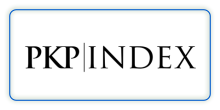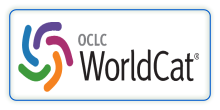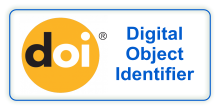CONSTRUCTION 5.0 IS ON THE WAY TO BECOMING THE STRONGEST INDUSTRY THAT ADVANCES SOCIAL SUSTAINABILITY IN THE DIGITAL AGE. A MATURITY ASSESSMENT
DOI:
https://doi.org/10.29121/ijoest.v9.i4.2025.665Keywords:
Construction 5.0, Innovation, Social Sustainability, ESGAbstract
Convincing use cases and reliable empirical values are essential for the construction industry and its decision-makers to face the questions and challenges of digital transformation and to shape their own digital strategy. In fact, a connection has been identified between the increasing acceptance of digitization in construction companies and the innovative creation of use cases. Therefore, the aim of this study is to examine the evidence that will greatly facilitate the development of such an innovation scenario and ensure even wider adoption. The study critically questions whether the perception of the construction industry as one that is lagging behind digitization and Artificial Intelligence (AI) is realistic or not, or whether the industry is rather a driver of a sustainable digital age.
The study used structured literature analysis and interviews with corporate best practices. The analysis and evaluation of the database follow the Hermeneutic Approach. Overall, this research led to the new aspects that underpin a convincing innovation scenario contributing to the broader use of digital methods and AI. With new findings, this study adds value to scientific literature and is evidence of the industry's leadership.
Motivation/Background: The holistic approach from the perspective of a Civil Engineer, examining Construction 5.0, its related success factor and compass for socially sustainable construction and fulfillment of sustainability goals and ESG, may add value to your academic reading community. This manuscript is part of the author`s larger scientific research work “CDR in Construction in-line with ESG and SDGs”.
Method: The study for this original article applies the so-called “Next Generation”-Method. It recognizes both challenges and limitations of digital transformation and the related human factors followed by normative questions. But it also deepens the holistic understanding of the explosive power and potential of new technologies such as AI catalyzing the construction branch into a more resilient, innovative one.
Results: The aim of this work is to assess such an innovative scenario and ensure even wider adoption. The study critically questions whether the perception of the construction industry as one that is lagging behind digitization and AI is realistic or not, or whether the industry is rather a driver of a sustainable digital age.
Conclusions: The paper´s discussion offers new aspects of this new scientific niche, to add value to scientific research. Furthermore, this paper aims to fully capture a new approach to assess the construction branch´s innovation strategy with a practicable framework for increasing both societal and corporate sustainability.
The paper consists in a connection between a discovery, new scientific findings and its practical application.
Downloads
References
Abdulqader, Z. A. (2024). Responsible AI Development for Sustainable Enterprises: A Review of Integrating Ethical AI with IoT and Enterprise Systems. Journal of Information Technology and Informatics, 3(2), 129–156.
Adhikari, D. R., & Shrestha, P. (2023). Knowledge Management Initiatives for Achieving Sustainable Development Goal 4.7: Higher Education Institutions' Stakeholder Perspectives. Journal of Knowledge Management, 27(4), 1109–1139. https://doi.org/10.1108/JKM-03-2022-0172
Adriaanse, A. M., et al. (2004). Alignment Between ICT and Communication in Construction Projects. International Journal of Human Resources Development and Management, 4(4), 346–357. https://doi.org/10.1504/IJHRDM.2004.005043
Ahmad Pozin, M. A., et al. (2019). An Ability of WhatsApp Usage in Industrialised Building System (IBS) Construction Project. International Journal of Interactive Mobile Technologies, 13(4), 188. https://doi.org/10.3991/ijim.v13i04.10548
Alaloul, W. S., et al. (2018). Industry Revolution IR 4.0: Future Opportunities and Challenges in Construction Industry. MATEC Web of Conferences, 203, 02010. https://doi.org/10.1051/matecconf/201820302010
Alaloul, W. S., et al. (2022). Productivity Monitoring in Building Construction Projects: A Systematic Review. Engineering, Construction and Architectural Management, 29(7), 2760–2785. https://doi.org/10.1108/ECAM-03-2021-0211
An, L., et al. (2022). Knowledge Management and Innovation. Data and Information Management, 6(3), 100018. https://doi.org/10.1016/j.dim.2022.100018
Bal, M., Bryde, D., Fearon, D., & Ochieng, E. (2013). Stakeholder Engagement: Achieving Sustainability in the Construction Sector. Sustainability, 5(2), 695–710. https://doi.org/10.3390/su5020695
BauInfoConsult. (2020). Social Media am Bau: Stärkerer Einsatz von WhatsApp im Berufsalltag.
Beeke, J. (2024). Gastvorwort. In B. Weber-Lewerenz (Ed.), Diversität im Bauwesen—Die Gamechanger. Springer. https://doi.org/10.1007/978-3-658-45632-0
Blayse, A. M., & Manley, K. (2004). Key Influences on Construction Innovation. Construction Innovation, 4(3), 143–154. https://doi.org/10.1108/14714170410815060
Chen, Z. S., et al. (2024). Dynamic Collective Opinion Generation Framework for Digital Transformation Barrier Analysis in the construction industry. Information Fusion, 103, 102096. https://doi.org/10.1016/j.inffus.2023.102096
Chung, J. K. H., et al. (2009). Improving Megaproject Briefing Through Enhanced Collaboration with ICT. Automation in Construction, 18(7), 966–974. https://doi.org/10.1016/j.autcon.2009.05.001
Cisterna, D. (2024). Von Walkie-Talkies bis hin zu Messaging-Apps: Erkundung der Herausforderungen und Chancen bei der Kommunikation und Datenerfassung bei Bauprojekten. In B. Weber-Lewerenz (Ed.), Diversität im Bauwesen—Die Gamechanger. Springer.
Daniotti, B., Gianinetto, M., & Della Torre, S. (2020). Digital Transformation of the Design, Construction and Management Processes of the Built Environment (p. 400+). Springer Nature. https://doi.org/10.1007/978-3-030-33570-0
Ernstsen, S. N., Whyte, J., Thuesen, C., & Maier, A. (2021). How innovation Champions Frame the Future: Three Visions for Digital Transformation of Construction. Journal of Construction Engineering and Management, 147(1). https://doi.org/10.1061/%28ASCE%29CO.1943-7862.0001928
Feirabend, S. (2022). Digitale Kompetenz im Bauwesen—Quo vadis? In 1. Fachkongress Konstruktiver Ingenieurbau (pp. 25–34).
Gadamer, H. G., & Figal, G. (2007). Wahrheit und Methode (pp. 395–396). Akademie Verlag.
Ghaffar, S. H., et al. (2022). Innovation in Construction: A Practical Guide to Transforming the Construction Industry. Springer. https://doi.org/10.1007/978-3-030-95798-8
Goodrum, P., et al. (2011). Model to Predict the Impact of a Technology on Construction Productivity. Journal of Construction Engineering and Management, 137(9), 678–688. https://doi.org/10.1061/%28ASCE%29CO.1943-7862.0000328
Gäbler, J., & Otzdorff, M. (2023). Digitale Transformation im Bauwesen: Digitale Werkzeuge und Agiles Arbeiten im Modernen Hochbau. In Agile Digitalisierung im Baubetrieb (pp. 261–278). Springer. https://doi.org/10.1007/978-3-658-43247-8_13
Haghsheno, S., Satzger, G., Lauble, S., & Vössing, M. (2024). Künstliche Intelligenz im Bauwesen: Grundlagen und Anwendungsfälle. Springer. https://doi.org/10.1007/978-3-658-42796-2
Haus, S. (2024). Diversität aM Bau—Wege Ins Handwerk: Es Zählt Nicht, Wo Du Herkommst, Sondern Wo Du Hinwillst. In B. Weber-Lewerenz (Ed.), Diversität im Bauwesen—Die Gamechanger. Springer.
Helmus, M., et al. (2020). Building Information Modeling (BIM) Als Basis fÜr Den Umgang Mit Digitalen Informationen Zur Optimierung Von Stoffkreisläufen im Bauwesen. DBU. https://www.dbu.de/projekt_33110/01_db_2848.html
Hölzle, K. (2024). Grußwort. In B. Weber-Lewerenz (Ed.), Diversität im Bauwesen—Die Gamechanger. Springer. https://doi.org/10.1007/978-3-658-45632-0
Jacob, C. (2022). Der traditionelle Weg Der Bau- Und Immobilienwirtschaft in Die Digitalisierte Welt. In Auf Dem Weg Zu Einer Nachhaltigen, Effizienten Und Profitablen Wertschöpfung Von Gebäuden (pp. 3–23). Springer. https://doi.org/10.1007/978-3-658-34962-2_1
Jahanger, Q. K., Louis, J., Pestana, C., & Trejo, D. (2021). Potential Positive Impacts of Digitalization of Construction-Phase Information Management for Project Owners. Journal of Information Technology in Construction, 26. https://doi.org/10.36680/j.itcon.2021.001
Janson, J. (2024). Handwerk hat Goldenen Boden. In B. Weber-Lewerenz (Ed.), Diversität im Bauwesen—Die Gamechanger. Springer.
Jäkel, J. I., Zoghian, P. M., & Klemt-Albert, K. (2024). Anwendungsfelder und Implementierungsmodelle von Robotik im Bauwesen. In S. Haghsheno et al. (Eds.), Künstliche Intelligenz im Bauwesen (pp. 395–412). Springer. https://doi.org/10.1007/978-3-658-42796-2_23
Klinc, R., & Turk, Ž. (2019). Construction 4.0—Digital Transformation of one of the Oldest Industries. Economic and Business Review, 21(3). https://doi.org/10.15458/ebr.92
Kling, H. (2024). My Story: Ein Berufsleben Zwischen Familie, Vertrieb und Engineering. In B. Weber-Lewerenz (Ed.), Diversität im Bauwesen—Die Gamechanger. Springer.
Koscheyev, V., Rapgof, V., & Vinogradova, V. (2019). Digital Transformation of Construction Organizations. IOP Conference Series: Materials Science and Engineering, 497(1), 012010. https://doi.org/10.1088/1757-899X/497/1/012010
Kraus, M. A., & Drass, M. (2020). Künstliche Intelligenz im Bauingenieurwesen: Hintergründe, Status Quo und Potenziale. Bauingenieur, 95(10). https://doi.org/10.37544/0005-6650-2020-10-39
Kölzer, T. (2022). Nachhaltige Und Digitale Konzepte im Bauwesen—Komplex, Konträr, Kompatibel, Konstruktiv. In Nachhaltige Und Digitale Baukonzepte (pp. 1–36). Springer Fachmedien Wiesbaden. https://doi.org/10.1007/978-3-658-36776-3_1
Lemaitre, C. (2022). Vollgas Richtung Nachhaltiger Ingenieurbau! Der Bauingenieur, 97(3), A3.
Lijauco, F., Gajendran, T., Brewer, G., & Rasoolimanesh, S. M. (2020). Impacts of Culture on Innovation Propensity in Small to Medium Enterprises in Construction. Journal of Construction Engineering and Management, 146(2). https://doi.org/10.1061/%28ASCE%29CO.1943-7862.0001753
Lindblad, H., & Guerrero, J. R. (2020). Client's Role in Promoting BIM Implementation and Innovation in Construction. Construction Management and Economics, 38(5), 468–482. https://doi.org/10.1080/01446193.2020.1716989
Loeffler, J. (2024). Exploration der Möglichkeiten und Einflussfaktoren von großen Sprachmodellen zur digitalen Transformation, Effizienzsteigerung und Förderung nachhaltiger Praktiken [Master’s thesis]. HTWG Konstanz.
Mulder, A. (2024). SAchlich Konstruktiv + Lächeln Aber Bestimmt Sein = Gefährliche Frau! In B. Weber-Lewerenz (Ed.), Diversität im Bauwesen—Die Gamechanger. Springer.
Mühlbauer, M. (2024). Aktuelle Chancen für Diversität im Kontext von BIM, KI, Metaverse und Augmented Reality. In B. Weber-Lewerenz (Ed.), Diversität im Bauwesen—Die Gamechanger. Springer.
Obiuto, N. C., Adebayo, R. A., Olajiga, O. K., & Festus-Ikhuoria, I. C. (2024). Integrating Artificial Intelligence in Construction Management: Improving Project Efficiency and Cost-Effectiveness. International Journal of Advanced Multidisciplinary Research Studies, 4(2), 639–647. https://doi.org/10.62225/2583049X.2024.4.2.2550
Oesterreich, T. D., & Teuteberg, F. (2016). Understanding the Implications of Digitisation and Automation in the Context of Industry 4.0: A triangulation approach and elements of a research agenda for the construction industry. Computers in Industry, 83, 121–139. https://doi.org/10.1016/j.compind.2016.09.006
Pan, Y., & Zhang, L. (2021). Roles of Artificial Intelligence in Construction Engineering and Management: A Critical Review and Future Trends. Automation in Construction, 122. https://doi.org/10.1016/j.autcon.2020.103517
Pasternack, G. (1983). Interpretation as Methodical Procedure: Methodological Fundaments of Normed Hermeneutics. Poetics, 12(2–3), 185–205. https://doi.org/10.1016/0304-422X%2883%2990027-X
Perkins, I., & Skitmore, M. (2015). Three-Dimensional Printing in the Construction Industry: A Review. International Journal of Construction Management, 15(1), 1–9. https://doi.org/10.1080/15623599.2015.1012136
Pylypchuk, P. (2024). 6 Strategien zur Skalierung Der Bauinnovation. In B. Weber-Lewerenz (Ed.), Diversität im Bauwesen—Die Gamechanger. Springer.
Rane, N. (2023). Role of ChatGPT and Similar Generative Artificial Intelligence (AI) in Construction Industry. SSRN. https://doi.org/10.2139/ssrn.4598258
Schranz, C., Gerger, A., & Urban, H. (2020). Augmented Reality im Bauwesen: Teil 1—Anwendungs- und Anforderungsanalyse. Der Bauingenieur, 95(10), 379–388. https://doi.org/10.37544/0005-6650-2020-10-49
Schranz, C., et al. (2021). AR-AQ-Bau: Einsatz von Augmented Reality zur Abnahme und Qualitätssicherung auf Baustellen. In Agile Digitalisierung im Baubetrieb. Springer. https://doi.org/10.1007/978-3-658-43247-8_13
Shang, C., et al. (2004). Study on the Standard System of the Application of Information Technology in China's Construction Industry. Automation in Construction, 13(5), 591–596. https://doi.org/10.1016/j.autcon.2004.04.005
Weber-Lewerenz, B. (2021). Die unternehmerisch verantwortungsvolle Digitalisierung im Bauwesen. Bauingenieur, 96(1–2), 19–25. https://doi.org/10.37544/0005-6650-2021-01-02-45
Weber-Lewerenz, B. (2022). Wertakzente im Bauwesen 4.0: Ethische Beobachtungen im Umgang mit der Digitalisierung und KI. Springer. https://doi.org/10.1007/978-3-658-38238-4
Weber-Lewerenz, B. (2024). Innovation Empowerment in Construction 4.0 by the CDR-Approach: A new field of Scientific Research for the Digital Breakthrough [Doctoral dissertation]. Springer. https://doi.org/10.1007/978-3-658-43905-7
Weber-Lewerenz, B. (2024). KI im Bauwesen: Wie Wollen Wir Sie Einsetzen? [Podcast interview]. Springer Verlag Podcast Hören.Lesen.Wissen.
Wen, J., & Gheisari, M. (2020). Using Virtual Reality to Facilitate Communication in the AEC Domain: A Systematic Review. Construction Innovation, 20(3), 509–542. https://doi.org/10.1108/CI-11-2019-0122
Young, D., Panthi, K., & Noor, O. (2021). Challenges Involved in Adopting BIM on the Construction Jobsite. EPiC Series in Built Environment, 2(2), 302–310. https://doi.org/10.29007/f8r3
Zulu, S. L., et al. (2023). Exploring Leaders' Perceptions of the Business Case for Digitalisation in the Construction Industry. Buildings, 13(3), 701. https://doi.org/10.3390/buildings13030701
Published
How to Cite
Issue
Section
License
Copyright (c) 2025 Dr. Bianca Weber-Lewerenz

This work is licensed under a Creative Commons Attribution 4.0 International License.






























